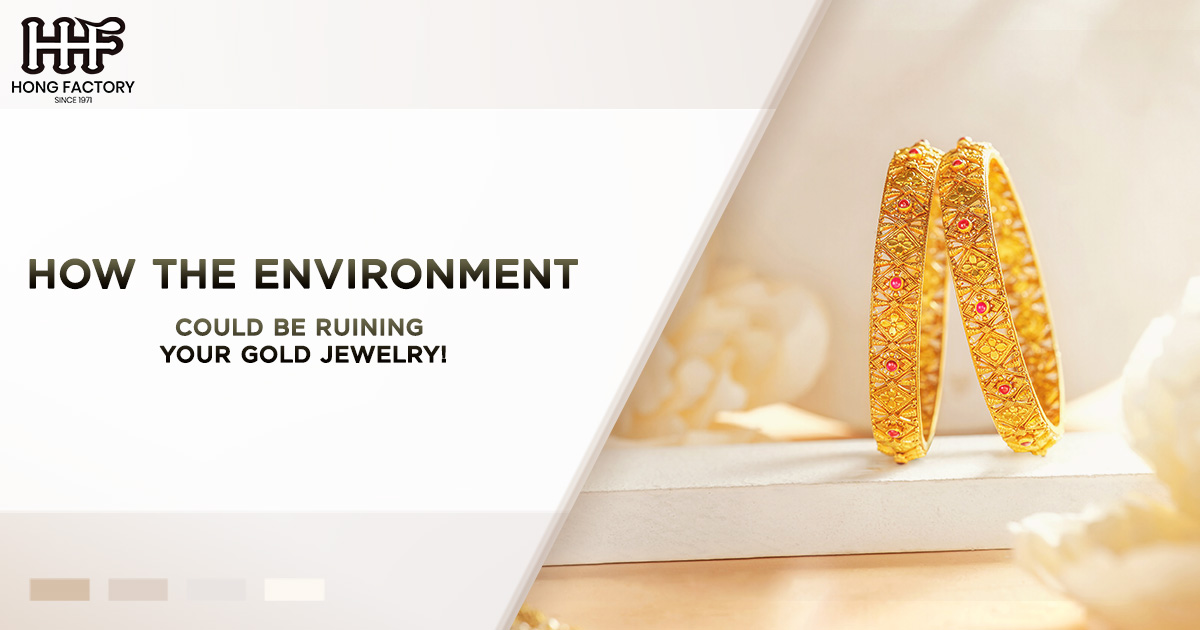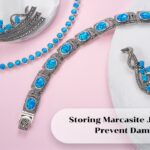Gold jewelry has long been treasured for its beauty, value, and durability. Its timeless appeal makes it a preferred choice for many, whether it’s a delicate necklace, a pair of elegant earrings, or a family heirloom ring. While gold is known for its resistance to tarnish and corrosion, it is not entirely immune to environmental factors. Chemicals, temperature, and humidity—three seemingly innocuous elements—can have a profound impact on the longevity and appearance of your gold jewelry.
In this article, we will dive into the surprising ways the environment can degrade or alter your gold jewelry and how you can protect these precious pieces from harm.
Understanding the Composition of Gold Jewelry
Before discussing environmental impacts, it’s essential to understand the composition of gold jewelry. Pure gold (24 karat) is soft and malleable, making it impractical for crafting durable jewelry pieces. To strengthen it, gold is often alloyed with other metals such as copper, silver, or nickel. These alloying metals give gold its preferred hardness and sometimes its color variations, such as rose gold or white gold.
However, these added metals make gold jewelry susceptible to environmental influences. While pure gold is chemically inert, the alloys can react with external factors like chemicals, fluctuating temperature, or elevated humidity, causing changes in the jewelry’s appearance or structural integrity.
Environmental Impacts on Gold Jewelry
Gold jewelry may look indestructible, but prolonged exposure to certain environmental conditions can cause damage, dullness, or discoloration. Let’s explore the most common environmental threats to gold jewelry.
1. Chemicals : A Hidden Threat to Gold’s Shine
Chemical exposure is one of the biggest culprits when it comes to damaging gold jewelry. While pure gold doesn’t typically react to chemicals, the alloyed metals in your gold jewelry can be highly vulnerable. Everyday products and chemicals can cause significant harm, including
- Household Cleaners : Cleaning agents, detergents, and bleach contain harsh chemicals that can corrode or discolor gold jewelry over time. For instance, chlorine is known to weaken metal alloys in gold, potentially causing cracks or breakage with repeated exposure.
- Cosmetics and Perfumes : Lotions, makeup, hairspray, and perfumes may leave residues on your gold jewelry. The chemicals in these products—such as alcohol or acids—can strip away the protective coating or dull the surface, leaving your jewelry looking worn.
- Swimming Pools and Hot Tubs : Both contain chlorine, which accelerates chemical reactions with gold alloys, particularly in hot water. Long-term exposure can alter your jewelry’s structure and surface.
- Acidic Substances : Contact with acidic foods or spills (like citrus juice or vinegar) can also tarnish gold jewelry, especially if left uncleaned.
How to Protect Your Gold from Chemicals
- Remove jewelry before cleaning, swimming, or applying substances like perfume or lotion.
- Rinse your jewelry with lukewarm water and gently clean it with a soft cloth after exposure to potentially harmful chemicals.
2. Temperature Extremes: Structural Risks to Gold
Another significant environmental factor that could be affecting your gold jewelry is temperature. Sudden temperature changes or prolonged exposure to extreme conditions can damage your gold in several ways
- Thermal Expansion and Contraction: Gold is a malleable metal, and repeated exposure to very high or low temperatures can lead to slight expansion or contraction. Over time, this can weaken the integrity of settings, clasps, or tiny prongs that hold gemstones securely in place.
- Melting Point Considerations: While gold’s melting point is high (around 1,064°C or 1,947°F), alloyed metals in your jewelry may have lower melting points. This makes them more susceptible to warping or minor alterations during exposure to extreme heat—for example, from open flames or industrial machinery.
- Heat Tarnishing: At high temperatures, alloy metals like copper may oxidize, resulting in tarnishing or discoloration of your gold jewelry.
How to Protect Your Gold from Temperature Changes
- Avoid wearing gold jewelry while cooking over open flames or working near high-temperature machinery.
- Store your jewelry in temperature-controlled environments to prevent extreme hot or cold exposure.
3. Humidity: The Silent Saboteur of Shine
While gold’s non-corrosive nature makes it remarkably durable, high humidity levels pose hidden dangers to your gold jewelry. Here’s how
- Moisture and Oxidation: Humidity introduces moisture into the air, which can interact with alloy metals in your gold jewelry. Over time, this can lead to tarnish or corrosion, especially in pieces with silver or copper alloys.
- Sweat and Natural Oils: High humidity often results in increased perspiration. Sweat contains salts and oils, which can leave residues on your gold jewelry, diminishing its shine and accelerating wear on alloy metals.
- Fungal Growth: In cases of prolonged humidity, gold jewelry stored in damp areas can even develop fungal growth on intricate detailing or within clasps and chains.
How to Protect Your Gold from Humidity
- Store your jewelry in airtight containers with anti-tarnish strips or silica gel packets to reduce moisture buildup.
- Avoid wearing gold jewelry in areas with excessive humidity, such as saunas or tropical climates.
- Dry your gold jewelry thoroughly if it gets wet, and clean it regularly to remove buildup.
Practical Tips for Preserving Your Gold Jewelry
Taking preemptive measures can significantly extend the lifespan and brilliance of your gold jewelry. Here are essential tips to keep your gold jewelry safe from environmental damage
- Proper Storage : Always store your gold jewelry in a clean, dry place. Use jewelry boxes with soft linings or individual pouches to prevent scratches and exposure to air or humidity.
- Regular Cleaning : Gently clean your gold jewelry with warm water, mild soap, and a soft brush. Avoid abrasive cleaners or brushes that might scratch the surface.
- Professional Inspection : Regularly take your gold jewelry to a jeweler for inspection. They can check for damaged clasps, loosened prongs, or tarnishing that might have gone unnoticed.
- Mindful Wearing : Be conscious of where and when you wear your jewelry. Remove it during activities like swimming, exercising, or gardening, where it’s likely to come into contact with chemicals or sweat.
- Avoid Prolonged Environmental Exposure : Prolonged exposure to direct sunlight, dusty environments, or extreme weather should be avoided when wearing gold jewelry.
Conclusion
Gold jewelry may seem impervious to wear and tear, but environmental factors like chemicals, temperature, and humidity can take a toll over time. Understanding these risks and taking simple precautions can help you preserve your gold’s sparkle, structural integrity, and value for years to come.
By being mindful of what your gold jewelry is exposed to, regularly cleaning it, and storing it properly, you not only maintain its brilliance but also honor the sentimental and financial investment that makes gold jewelry so special. So take measures today to protect your precious pieces and ensure they remain as dazzling as the day you bought them!





